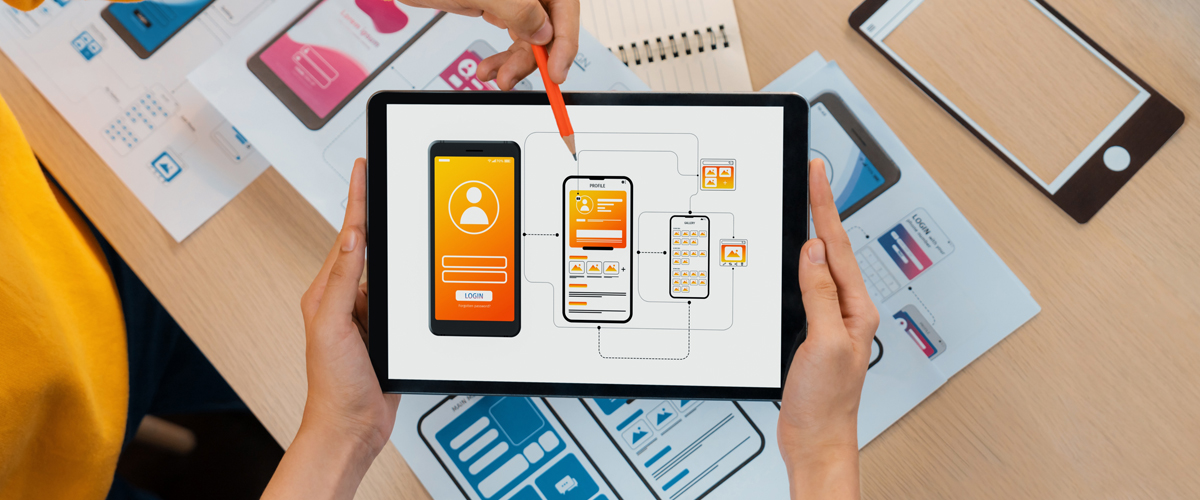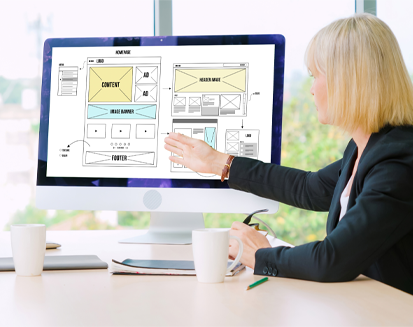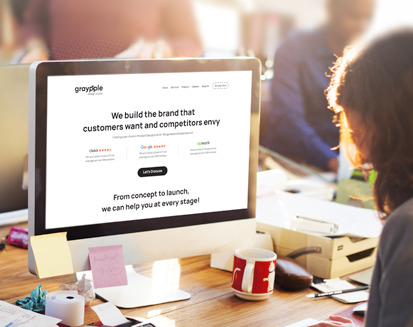Designers should learn different ways to create digital products. One effective method is using design sprints. This approach is becoming very popular because it helps increase productivity and organize the design process. This is especially important when using agile project management techniques.

So, what is a design sprint, exactly? It’s an effective strategy for immediately mobilizing your team’s resources to solve an issue. Instead of dividing their attention, team members work together to solve a single issue and find the best possible solutions. The blog will discuss every aspect of design sprints, from the benefits they provide to the key responsibilities each member plays in the process.
What is a Design Sprint: An Introduction?
When developing a digital product, a design sprint is an efficient and time-saving strategy for generating viable options. The purpose of the design sprint is to ensure that the plans and methods being used are effective.
It’s a planned five-day process where a small group of people, usually between 4 and 7, get together to work on important product development questions and problems. They use methods from business planning, design thinking, and other fields to develop creative ideas. Key decision-makers, designers, engineers, and people from other parts of the business, like marketing or operations, can be on the team, which a facilitator will lead.
Pros and Cons of Design Sprint
Pros of Design Sprint:
- Problem-solving opportunities:
The major challenges of a project may be resolved more quickly and efficiently with the aid of a design sprint. Together, they can see things from many perspectives because of their close teamwork and brainstorming. Sprints allow experts to quickly identify the root of an issue, brainstorm potential solutions, and put into action the most promising one.
- Immediate Effect:
A key goal of design sprints is to proceed quickly and focus on results. The main goal is to avoid wasting time on lengthy talks and conversations that don’t finish anything. Instead, the sprint allows the team to focus on a single goal.
- Define Specific Objectives:
By precisely outlining the expected end deliverables, design sprints help keep everyone on the same page and eliminate unnecessary ambiguity.
- Encourage creativity:
The setting of a design sprint encourages innovation and exploration of new possibilities.
- Efficient Prototyping:
Rather than spending time and energy writing detailed requirements, design sprints can save time and money by rapidly prototyping many potential solutions.
- Lowered potential danger:
Even though the risks are still high, they will only last briefly. This ensures that bad choices will be identified and corrected when the product owner reviews the sprint’s progress. By doing so, you reduce the likelihood of making a poor decision that might have serious consequences down the road.
- Involvement of all Key Members:
The design sprint method encourages participation from everyone involved. This ensures that early deliverables are visible to all parties involved. By allowing product owners to address choices as they come up, sprints foster an inclusive and productive atmosphere among the team.
- Enhanced User Experience:
During sprints, doing direct user testing with real users helps you understand the user experience better as they confirm or disprove your ideas.
Cons of Design Sprints
- Limited User Research:
Design sprints’ quick pace might limit the quality of user research. Longer, more conventional research approaches often provide more in-depth results.
- Shallower Insights:
Design sprints, in comparison to more conventional research methods, may provide less nuanced findings and fewer insights.
- Lack of Definitive Answers:
When problems are complicated, there might be better ways to solve them than design sprints. They are more effective in directing groups on the right path and showing them what to avoid.
- Poor Solution Clarity:
Although design sprints are good at finding bad results, they might only sometimes give a clear, detailed answer to the problems that must be solved.
- Drawing Challenges:
Drawing and sketching during design sprints might be uncomfortable for certain participants who need more confidence or the ability to put their thoughts on paper.
- Familiar Concepts:
Design sprints have been criticized for allegedly not being innovative since they rely too much on well-established practices.
Roles and Responsibilities of Each Stakeholder in Design Sprint
A design sprint should include all key team members and those interested in outcomes. The success of the sprint cycle depends on the contributions of each team member. The number of experts needed and their roles might change depending on the nature of the task at hand. Key sprint participants and their responsibilities are as follows:
- Project Manager:
The project manager’s involvement is crucial to the success of the design sprint. They are in charge of running the sprint, which includes setting up and running meetings, keeping tabs on the team’s development, monitoring each team member’s productivity, and maintaining a keen eye on time management efficiency.
- Senior Executive:
The senior executive or product manager of the organization is primarily responsible for determining what should be accomplished during the design sprint. They lay out the goals for the sprint and assess its progress to see whether it’s on track to meet those goals. While defining objectives is their main role, top executives may actively engage in the sprint to offer product direction clarity.
- Lead Designer:
The lead designer is a design professional well-versed in the product’s features and objectives. They play a critical role during the design sprint by approving the scope of work at each phase to ensure that the suggested design solutions align with the product’s goals. The contributions of the lead designer are crucial to keep the design stable and efficient.
- Tech Leader:
The tech leader is well-versed in the technological facets of the project. They are in charge of directing the execution of the selected strategies and making sure that the technical solutions presented throughout the sprint are in line with the company’s objectives. Tech leaders play a key role in connecting design and technical application.
- Marketing Expert:
The design sprint benefits from the input of marketing experts. Their focus on the customer’s wants and requirements and the market’s dynamics provide invaluable information. Marketing experts help the team determine how to make the product easy for users and ready for the market.
5 Crucial Steps of Product Design Sprint
Step 1: Understanding the Issue
- Objective: The first step is always to identify the issue at hand. The team’s preparation for the design sprint as a whole begins here. Finding out what the issue is, why it’s crucial, and how to solve it efficiently should be your priority.
- Tools and Techniques: To do this, One can use tools such as the “sprint backlog,” which lists the most important tasks and objectives for the sprint. This helps in putting things in order of importance. One can also make “empathy maps” to better comprehend the difficulties and requirements of their customers. These maps describe how people act, feel, and respond. In addition, “stakeholder maps” help us picture the client’s goals. Sticking to these maps helps us stay on track.
Step 2: Finding Solutions
- Objective: Now that we know what the issue is, we can begin to consider possible solutions. Imagine it as the sprint’s creative centre. In this step, we explore different possibilities and their pros and cons. It’s like trying all the keys in the lock before finding the one that works.
- Tools and Techniques: One can use “customer journey maps” to explore. These demonstrate product use and phases. It’s like making a road map for your trip. One can also consider making notes, drawing pictures, and “sketching” their thoughts. It’s similar to outlining an essay before writing the final version.
Step 3: Making a Decision
- Objective: Now that we have many options for proceeding, we must choose the best one. Now, we’re at the stage where decisions are made. It’s like picking the best path on our map. We compare and contrast the many possibilities to make smart choices.
- Tools and Techniques: It is helpful to use “user story maps.” They aid with visualizing various events and scenarios, allowing for a more thorough comprehension of the customer experience.
Consider using a technique known as “critiquing and voting.” Together, the team identifies the best options and explains why they chose them. The team should contribute ideas in the form of doodles and sticky notes, compile them, provide feedback, and ultimately vote on the most interesting concepts.
Step 4: Create UI/UX Design
- Objective: Finally, we can put our plans into action. The magic happens here—combining ideas into design. Think of this as a blueprint for your product and start creating UI and UX Design.
- Tools and Techniques: Designers use apps like Figma and Sketch to do this. This is similar to an artist using paints to make a picture. One should ensure that the design is not only practical but also aesthetically pleasing and simple to use.
Step 5: Test the Design
- Objective: After creating the design, think about whether it will work. The goal of this stage is to double-check and test everything to make sure it’s functioning properly. One should ensure that the final design aligns with the goals or objectives set in the beginning.
- Tools and Techniques: Consider organizing a “retrospective meeting” once You finish the design. Discuss the sprint process, point out any mistakes, and compare your achievements with the intended goals.
When Design Sprints Should NOT be Used?
Design sprints are enticing because they are quick and enjoyable. However, one should not use Design Sprints in certain conditions, such as:
When your problem is unclear
The purpose of design sprints is to aid us in resolving an issue. A design sprint isn’t the correct tool if you “have some cool ideas” or aren’t clear about what issue you’re attempting to tackle. The first step in using design sprints is to identify a user issue or requirement.
You have not identified an issue based on past research
Does the issue relate to business? To what extent, for instance, are you hoping to “increase newsletter sign-ups” or “fix churn rate”? You could fix this in a million different ways, but your list will be very, very long. To avoid this, you should first extract the requirements and pain areas of your consumers from previous studies.
A lot of research is required
We have seen a group attempting to use a design sprint to generate personas. More people and more time are needed for analysis when using personas or other generating approaches. In addition, more than a 30-minute usability test is needed for increasingly complicated items and processes. Verify that your day’s research time allotment is sufficient for your sprint’s demands.
Conclusion
Design sprints are an effective method for rapidly identifying issues, brainstorming and testing potential solutions, and getting feedback from real customers on working prototypes. However, there are better solutions for designing complicated products. After the sprint, further work may need to be done, such as refining ideas, taking a different approach, or even starting a new sprint. Using sprints effectively requires being aware of both their potential and their limits.
Do you want to understand what a sprint design is and how to execute it flawlessly? Our team of experts is here to offer you guidance and support. At Graypple Design Studio, we have extensive experience working on projects, conducting successful design sprints, and utilizing the agile methodology. Our team comprises highly skilled UI/UX designers with expertise in design and frontend development. Contact us today, and let’s discuss how we can transform your idea into a reality!
FAQs
How many people should be on a Design Sprint team?
A design sprint team typically comprises four to seven people, including a facilitator, a decision-maker, and design, technology, and marketing experts.
Should Design Sprints be used instead of traditional product development?
Though effective, design sprints may not be able to replace the complete product development cycle. They are complementary in that they tackle individual problems.
How Do You Determine If a Design Sprint Was Successful?
It is common practice to evaluate a design sprint’s success based on how well it meets its objectives, the effectiveness of the solutions it produces, and the positive effect it has on user experiences or business results.


